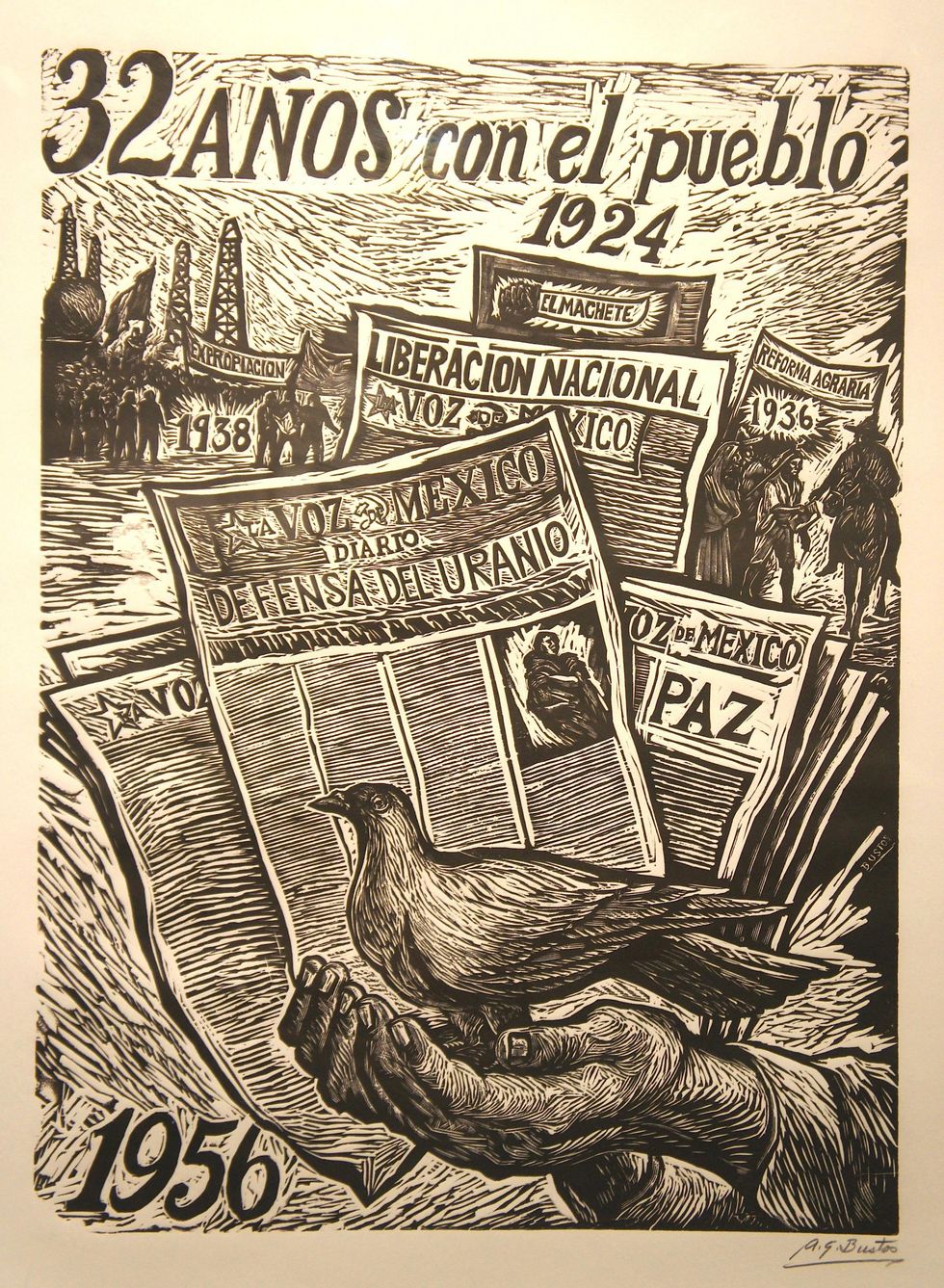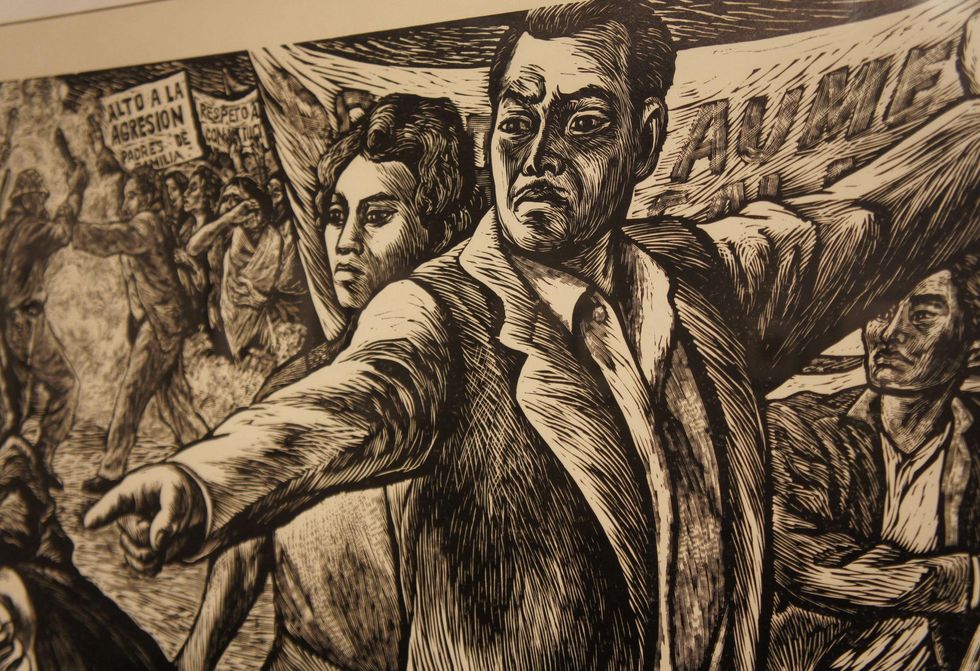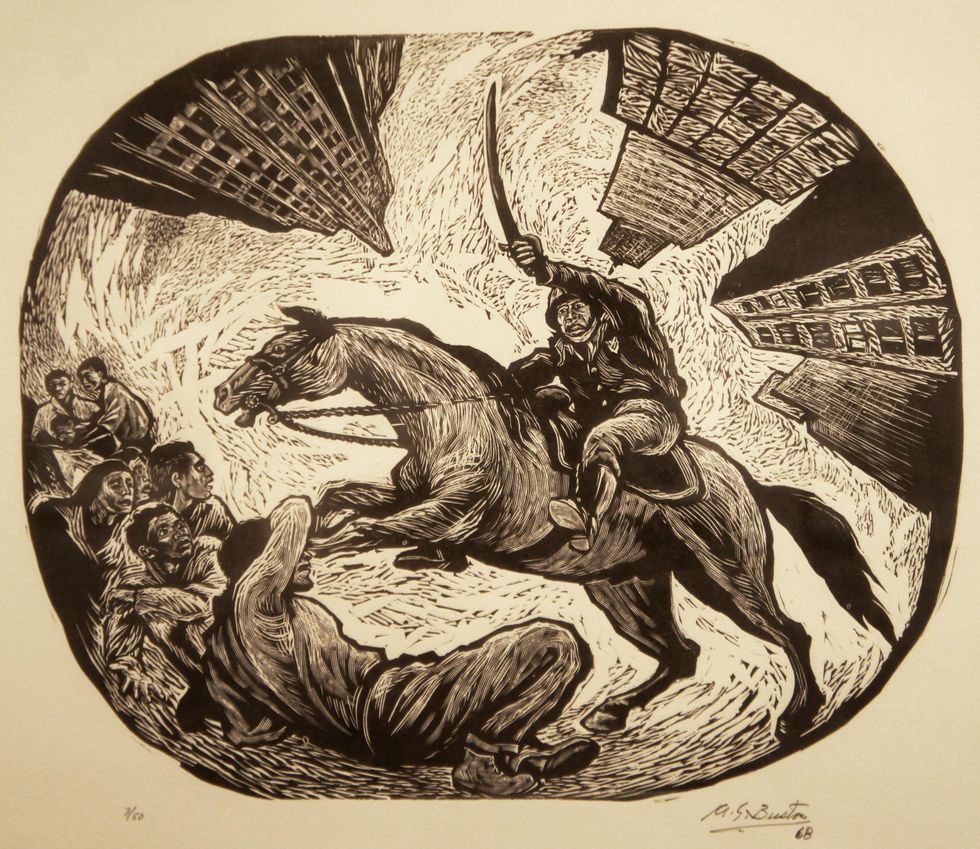Now through April 13
Graphic history: Print exhibit demonstrates the drama of revolutionary Mexican politics
"There are strong ties to the history of printing that come through in the exhibition," notes curator Keelin Burrows of the Museum of Printing History's current show, Arturo García
Bustos: La imagen del México postrevolucionario, on view through mid-April.
García Bustos' incorporation of printing presses and revolutionary newspapers into his fine art linocuts speaks to the power of print media — not simply to emotionally stir and aesthetically stimulate the viewer, but also to inspire social and political change.
García Bustos' incorporation of printing presses and revolutionary newspapers into his fine art linocuts spe aks to the power of printed media.
Organized by Austin's Mexic-Arte Museum in association with Mexico's Museo Nacional de la Estampa, the exhibition of 44 prints functions as something of a visual history of 19th- and 20th-century Mexican and Central American politics. Leftist heroes such as Benito Juarez, Emiliano Zapata and Father Miguel Hidalgo gaze unflinchingly from high contrast portraits, while peasants and laborers resist government oppression in active, graphic and sometimes violent prints.
Perhaps the most striking linocut in the show, the 1968 piece Manifestantes (Protesters), places the viewer in the position of a protester being trampled by a sword-wielding police officer on horseback.
Other works such as Movimiento Magisterial (1958), with its expansive cast of protesting teachers, scholars, workers and professionals seeking improved wages in the public space of a town plaza, reference specific historical moments. With its swirling lines, scenes of direct confrontation between masked police and citizen demonstrators and banners emblazoned with political messages, the piece demonstrates the social and political commitments of its creator.
Given García Bustos' link to leftist artists like Frida Kahlo and Diego Rivera (he was one of four young artists known as "Los Fridos" for their devotion to their mentor, Kahlo) and to progressive art organizations like the Artistas Jóvenes Revolucionarios and the printmaking collective Taller de la Grafica Popular (TGP, People's Graphic Workshop), the reoccurrence of these political themes comes as no surprise.
For your own lesson in post-revolutionary Mexican history filtered through the lens of García Bustos' activist art, hurry over to the Museum of Printing History at 1324 W. Clay Street before April 13.



